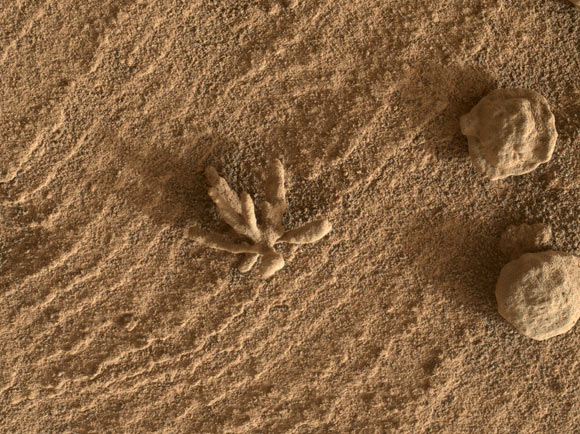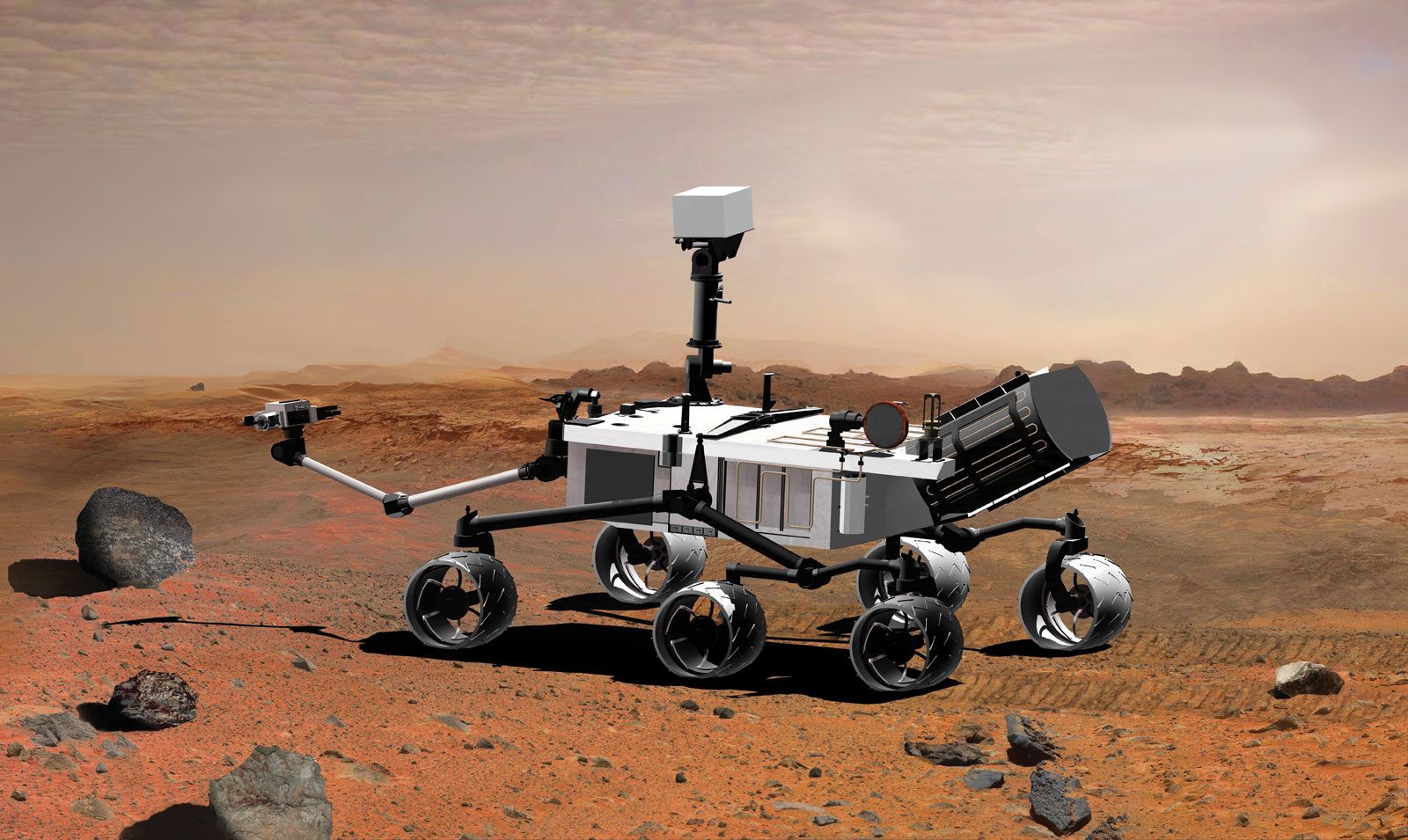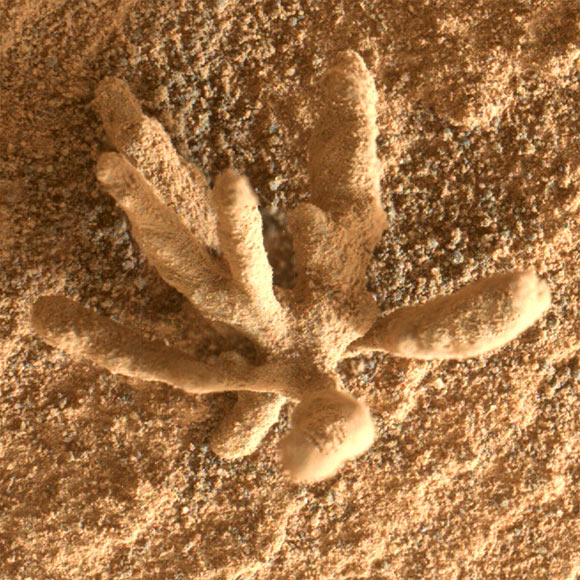
Curiosity, the fourth rover that the United States has sent to Mars, was launched on November 26, 2011 and landed on the planet on August 5, 2012. Mission by the Jet Propulsion Laboratory led by NASA and with the participation of nearly 500 scientists from the United States and other countries around the world.

Curiosity explores the 154-kilometer-wide Gale Crater and collects rock, soil and air samples for analysis on board. This rover uses an arm about 2 meters to collect and install instruments near selected rocks for study.
Its large size allows it to carry an advanced set of scientific instruments. One of them is the Mars Hand Lens Imager (MAHLI), an advanced type of camera that geologists often carry with them on field trips.

The MAHLI image taken on 24 February 2022 shows spherical and flower-like, coral rock artifacts on the surface of Gale Crater. After preliminary research, the scientists concluded that these specimens were created long ago when minerals were carried by water and cemented the rock.
“Previously, Curiosity has discovered a series of similar small features that form when mineralized liquids pass through ducts in rocks,” said members of the Curiosity team.
“Images of such features are helping us understand more about the long history of liquid water in Gale Crater.”

